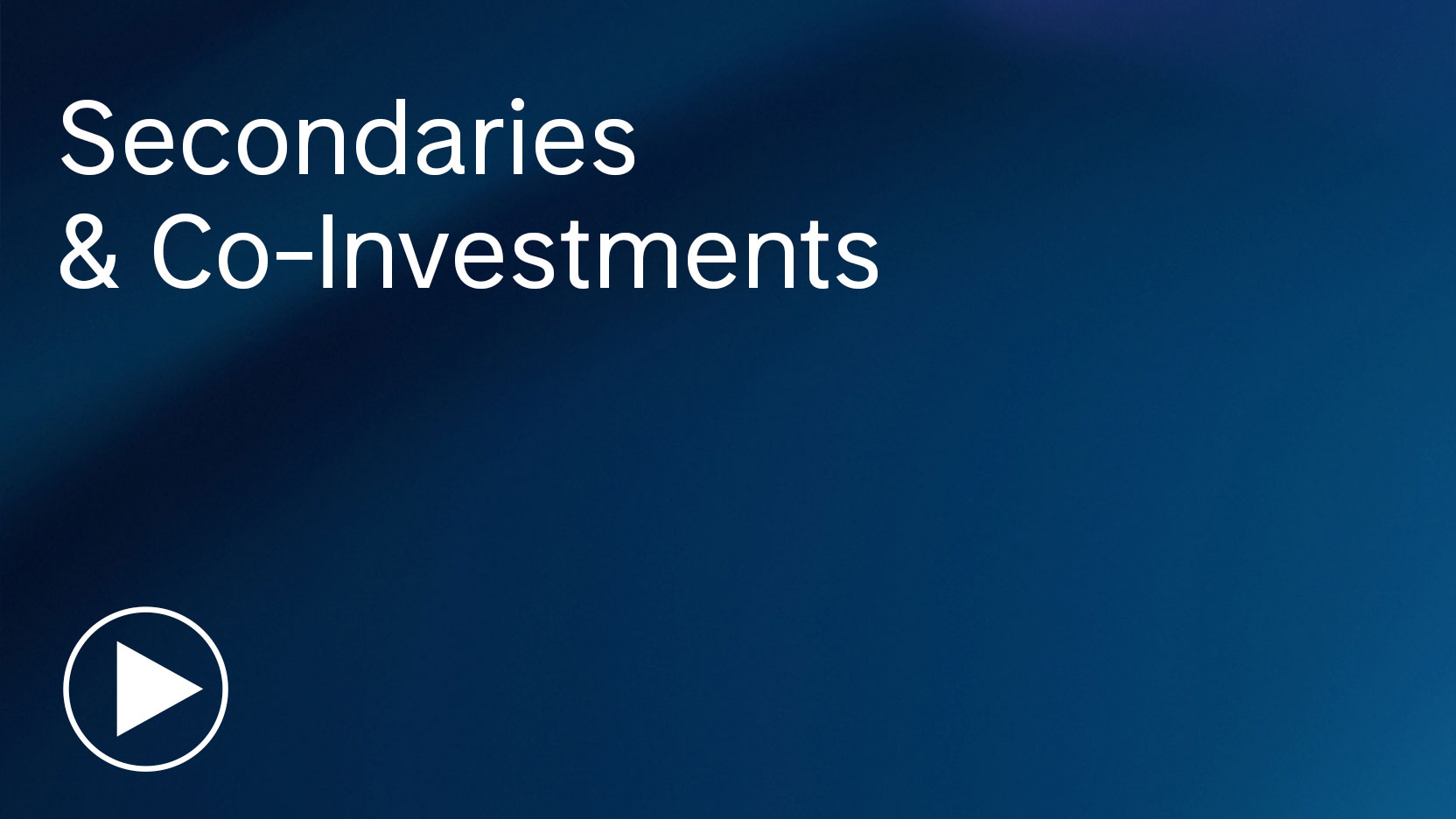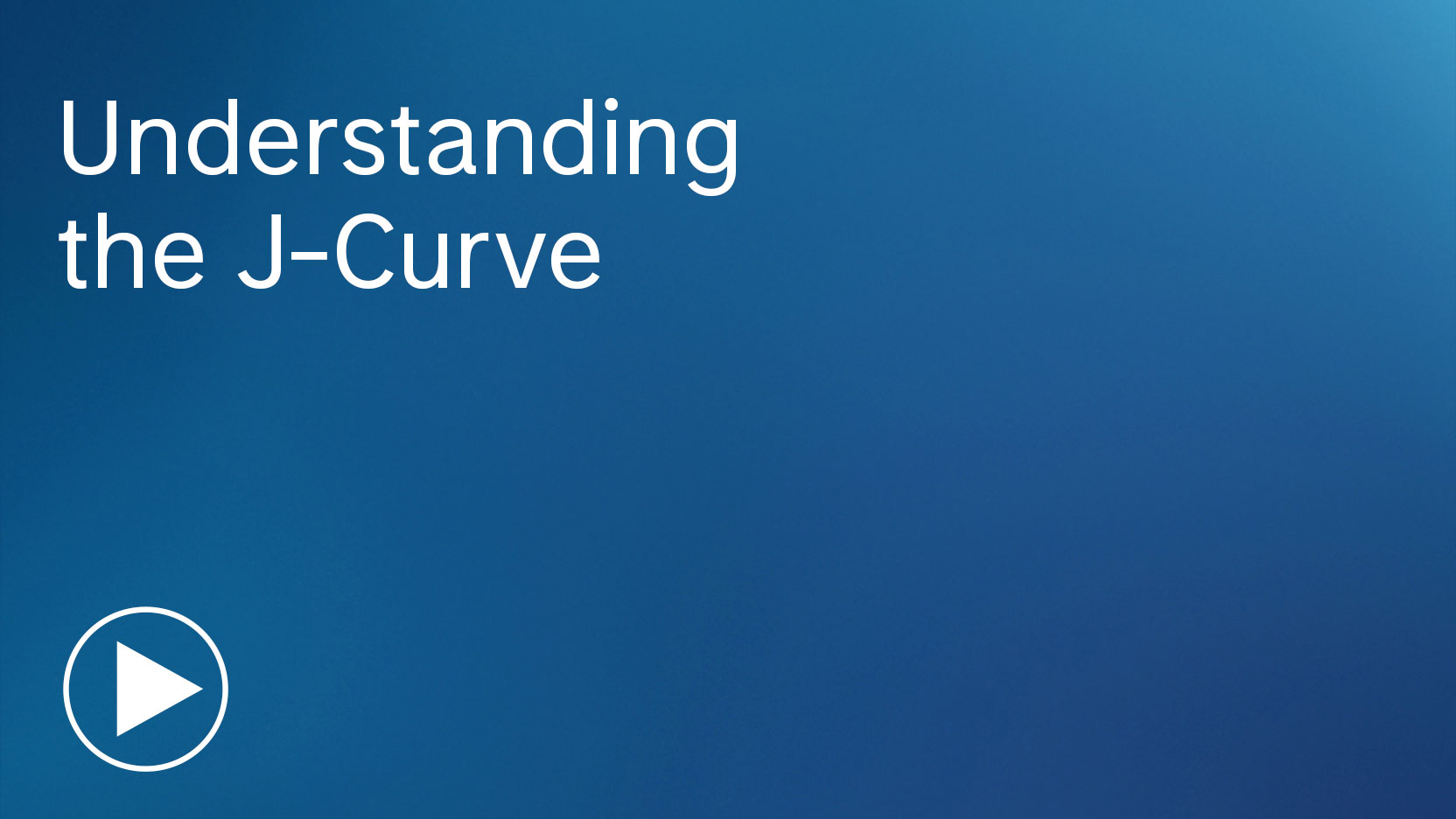
Transcript
When investors allocate to private equity and venture capital, historically, they’ve done that through a 10-year life drawdown fund structure. This type of fund has a three-year investment period. It’s going to be uncertain how quickly investors’ capital will be called, or how much will be invested at the end of that investment period. The investor might allocate $10 million to a specific private equity fund, and at the end of year three, they might find that only $8 million or $9 million of that has been called and invested in the portfolio companies.
It takes time to invest, and in those early years when you’re not yet fully invested, investors still are responsible for paying the annual 2% management fee on the entire amount of their committed capital. It takes three years to become fully invested in the private equity or venture capital drawdown fund, and towards the end of the fund, you’re forced to exit from those portfolio company investments. So, years eight, and nine, and ten of that private equity or venture capital fund will experience substantial exit activity. That means it takes time to get into the fund, up to three years, then you wait about five years, and then it takes time to receive the value of the exit, another three years. So you’re paying the fees relatively early in the life of that fund. So this is the primary market for private equity and venture capital investments, those who are invested directly with the general partner in the fund.
Now, the secondary market is much smaller than the primary market for private equity and venture capital, but secondaries can be a compelling investment. Secondaries allow the original investor, the limited partner in the primary fund, to sell their fund holdings and achieve liquidity before the fund distributes the exit proceeds. The original investor, the LP in the primary market, made a commitment to invest in that 10-year fund. That LP might get to year three, or year five, or year seven, and then they become interested in selling their interest in that private equity fund. Maybe the public equity market has gone through a bear market phase, and now that public equity has fallen, the value of private equity has not fallen nearly as much, and this is the denominator effect. So this investor is going to be overweight in private equity, and they might be forced to rebalance, or have a need of liquidity before the exits come in that fund.
The secondary buyer provides liquidity to the LP who is invested in the primary fund. The secondary buyer will purchase the original LP’s interest in that private equity fund, typically at a discount to net asset value. There are a number of advantages to this. The first advantage is if you buy at a discount to the net asset value, that could improve your return relative to the return of the original investor. Buying a secondary, after that original investor has paid the fees, the secondary investor is not responsible for those fees. So, if the secondary investor buys the fund in year four, they’re not paying the management fee in year one, year two, or year three, which is already paid by the limited partner investing in the primary fund. So not only is the secondary investor buying in at a discount to the current net asset value, they’re also buying at a discount to the fees that have already been paid in the original years of the fund. The LPs invested in the primary fund are buying into a blind pool. These investors can’t see what the portfolio investments are going to be because maybe even the GP doesn’t know it yet. If you buy in as a secondary buyer, after that three-year investment period has ended, you might be able to have transparency into the portfolio companies in the fund.
As a buyer of secondaries, you might earn a higher return than the buyer of the fund of the primary market. The secondary buyer has a shorter holding period, buying at a discount to NAV, paying lower fees, and still earning the same exit values.
There are a number of benefits and risks of investing in secondaries. By investing in secondaries, you’re able to invest across vintage years, fund objectives, and general partners. If you buy eight different secondaries, you might buy across four vintage years with different general partners, so you’re able to achieve a diversified portfolio. It could be less expensive to invest in the secondaries than it could be to invest in the primaries fund because the original buyer paid the fees that the secondary buyer is not responsible for, and the secondary buyer could purchase the fund at a discount to the net asset value.
There are risks of secondaries. The buyer of the secondary fund may wish to buy into a venture capital or private equity fund, but not every fund is going to be available in the secondary market. Not every PE or venture capital fund has LPs that are willing to sell their stake to secondary buyers, or the general partner might restrict the sale of those assets in the secondary market.
Another risk is that the buyer might need to understand why the primary LP is selling. It might be very profitable to buy a secondary, especially if the LP is selling simply because they have a need for liquidity. They’re overweight due to the denominator effect where the public market declines in value and now the privates are overweight in the asset allocation.
It might be good to buy into a secondary if the LP simply needs the money for one reason or another. There is a risk of buying the secondaries if the LP has lost confidence in this general partner. If the original LP doesn’t like the portfolio companies that are remaining, they’re going to sell out because they don’t believe there’s much return left in the fund.
In the traditional way of investing in private equity, the limited partners invest in the private equity fund managed by the general partner who’s chosen a number of portfolio companies. The LP is responsible for paying the management fee, and an incentive fee, and invest in the pool of portfolio companies that are chosen by the general partner.
The LP is entering into those companies when the GP enters and exiting from those portfolio companies when the GP is exiting. Most LPs are investing in private equity funds diversified across those portfolio companies, and they’re paying the management fee and the incentive fees.
In a co-investment structure, the LP is investing directly into the portfolio companies. The GP is buying a stake in the portfolio companies and putting them into the private equity fund alongside the GP, and the LP is buying a stake in the company. The GP is buying a majority stake in the company, and the LP might be buying a 3% stake of that portfolio company. The LP is directly buying shares in the private portfolio company outside of the fund structure. The benefit is that the limited partner may pay little to no fees on those co-investments and the LP might be able to hold their shares longer. After the GP has exited that opportunity, the LP might be able to continue to hold those investments in those portfolio companies. It’s much more complex for an LP to invest in co-investments than it is in the fund. The LP needs to perform due diligence on those portfolio companies. They have to have a legal structure that allows them to own shares in those privately held portfolio companies, and they need to watch for over-concentration in specific companies or industries.
There are benefits and risks of co-investments. The benefits are that the LPs might be able to invest larger amounts in private equity, they can be overweight specific companies or specific sectors, and they might be able to hold that company for a longer time period than they would be able to do so in that private equity fund structure. In addition, they might be able to reduce the fees of investing in private equity.
If there are zero fees for co-investments, that reduces the average fee of the entire private equity investment portfolio. Co-investments are definitely complex, so investors have to do their own due diligence. They need to create the legal structures and co-investments are increasing the investor stake in the portfolio company, and increasing the stake in that sector. If the LP only co-invests in tech stocks or privately held tech companies, they’ll increase their allocation to that sector.
As a participant in co-investments, you need to watch for the diversification of private equity investment program and make sure the overall diversification across sectors is as desire in the portfolio.
So, there’s the overview of investing in secondaries and co-investments. Secondaries may allow you to invest in private equity with greater diversification, lower fee burden, and a shorter holding period relative to the average fund. While co-investments might allow investors to allocate with a lower fee structure and a longer-term holding period than might be available within the private equity fund structure.
In this video, we explore the investment case for private equity secondaries and co-investments. We highlight how secondaries offer reduced fee burdens, shorter holding periods, and enhanced portfolio transparency compared to traditional private equity fund commitments. Co-investments allow LPs to invest directly alongside GPs in individual portfolio companies with potentially lower fees and extended holding periods. Both strategies provide diversification, fee efficiency, and tailored exposure, but come with risks such as limited availability and the need for more intensive due diligence.







